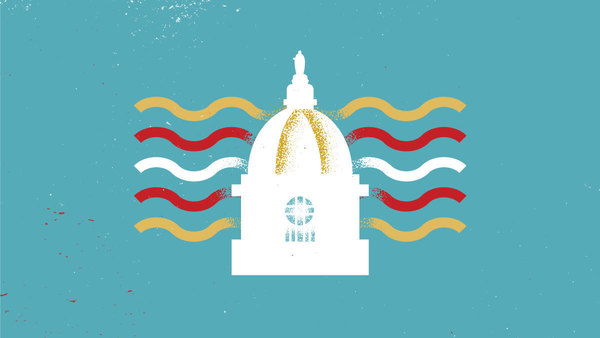
Asian American and Pacific Islander Heritage Month, also known as Asian American and Native Hawaiian/Pacific Islander Heritage Month and Asian/Pacific Heritage Month, became a month-long observance in 1990.
However, recognition efforts date back to 1978, when a joint congressional resolution established Asian/Pacific American Heritage Week. According to U.S. Census Bureau, the first 10 days of May were chosen to coincide with two important milestones: the arrival in the United States of the first Japanese immigrants (May 7, 1843) and contributions of Chinese workers to the building of the transcontinental railroad, completed May 10, 1869. President George H.W. Bush issued Presidential Proclamation 6130 designating May 1990 as the first Asian/Pacific American Heritage Month.
In a statement to the Notre Dame community, University President Rev. John I. Jenkins, C.S.C., said: ““As we mark the beginning of Asian American and Pacific Islander Heritage month, we have an opportunity to reflect on and celebrate the extraordinary contributions of the peoples and cultures of Asia and the Pacific Islands to our world, and particularly to the United States. A major benefit of the growing internationalization of Notre Dame has been more study of and appreciation for these cultures on our campus, particularly through the Liu Institute for Asia and Asian Studies, the work of Notre Dame International, and an ever-growing number of students, faculty and staff who bring to us the rich heritage of Asia and the Pacific Islands. We are a stronger community because of this diversity.”
Learn more about the history, traditions and culture of Americans of Asian and Pacific Islander (AAPI) heritage by viewing a special PBS collection of stories. Visit asianpacificheritage.gov/ to access a variety of historical accounts, online events and collections from The Library of Congress, National Archives and Records Administration, National Endowment for the Humanities, National Gallery of Art, National Park Service, Smithsonian Institution and United States Holocaust Memorial Museum
And to find out more about the Stop AAPI Hate movement, which is working to put an end to the anti-Asian bigotry and violence that has erupted during the COVID-19 pandemic, go to stopaapihate.org/.
Jewish American Heritage Month

On April 20, 2006, President George W. Bush proclaimed May as Jewish American Heritage Month.
“The Jewish American experience is a story of faith, fortitude, and progress,” said U.S. President Joseph R. Biden in a proclamation on April 30. “It is a quintessential American experience — one that is connected to key tenets of American identity, including our Nation’s commitment to freedom of religion and conscience. This month, we honor Jewish Americans — past and present — who have inextricably woven their experience and their accomplishments into the fabric of our national identity.”
The Library of Congress, National Archives and Records Administration, National Endowment for the Humanities, National Gallery of Art, National Park Service and United States Holocaust Memorial Museum are observing. These organizations have assembled a variety of exhibits and collections, access audio and video features and view selected photographs at www.jewishheritagemonth.gov/. For more, access the virtual offerings of the National Museum of American Jewish History (NMAJH) at www.nmajh.org/virtual-museum/. NMAJH is the only museum in the nation dedicated exclusively to exploring and interpreting the American Jewish experience.
Older Americans Month

When Older Americans Month was first observed in 1963, only 17 million living Americans had reached their 65th birthday, according to the nation’s Administration for Community Living. Of those, the organization reports, nearly one third lived in poverty and there were few programs to meet their needs. The Older Americans Act, which became law two years later, established the Department of Health, Education and Welfare, and called for the creation of State Units on Aging.
As of 2018, more than 52.4 million Americans were 65 and older, and the population is expected to reach 94.7 million in 2060. Today, there are many organizations, programs and people that support older adults. Find out more about these advocacy efforts at acl.gov/programs/aging-and-disability-networks. And for a list of things you can do individually or as a group or community this Older Americans Month, visit acl.gov/oam/2021/oam-2021-activity-ideas.